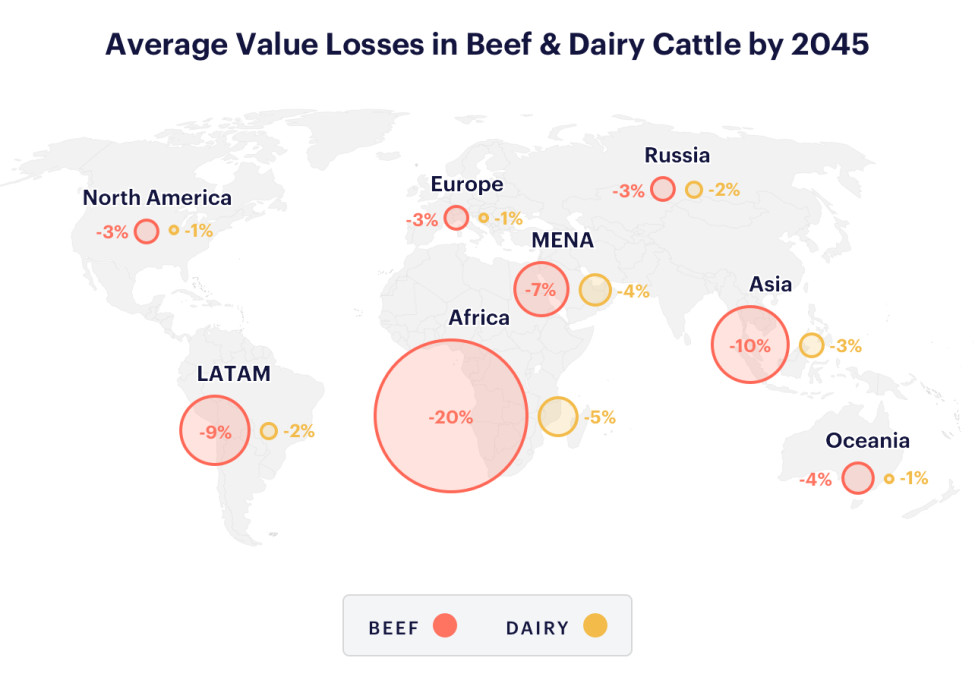Cost Drivers
The model is built around four costs: feed, heat stress on cattle, methane-reducing feed additives and carbon taxes. These were selected based on their materiality to the livestock sector. The macro and climate impact drivers used in scenario creation, as discussed on previous tabs, impact these costs. Feed costs currently amount to a significant share of total costs for livestock producers. Costs linked to feed additives, and carbon pricing are expected to become material as decarbonisation efforts escalate. And with increase in warming, heats stress can be expected to become a high physical risk to cattle.
Heat Stress
Heat stress can adversely affect cattle productivity by reducing liveweight gain, milk yield and fertility at temperatures higher than an animal's thermoneutral zone. While studies show evidence of heat stress impacts, the forecast value of production loss to livestock producers is largely understudied. The model uses a study, cited in the IPCC's latest report, which finds cattle production is expected to face losses of up to 7% by 2045 due to heat stress. Losses are expected to be more severe in tropical regions – between 10% and 20% in Latin America, Asia and Africa.

Carbon Price
Scenario specific carbon prices are implemented in the model for CO2 and non-CO2 emissions on the entire agriculture, forestry and land use (AFOLU) sectors. The carbon price acts as a tax on emissions and as a subsidy for carbon sequestration, incentivising the transition towards more emissions efficient production systems and the adoption of emissions mitigation technologies. The model assumes the carbon tax rate will likely be half as much in developing countries as in developed countries.
Feed prices
In the face of rising temperatures, global land use models foresee an increase in feed price volatility, driven by long-term climate-related impacts on crop yield, as well as demand and supply changes due to trade-related factors and changing consumer preferences.
Animal diets vary based on the nutritional needs of the animals and the regional availability of feed and fodder. While animal feed may contain several ingredients, the three major feed crops - wheat, maize, and soy - constitute a significant portion of diets across various protein types. Cattle diets rely less on feed crops and more on grass during grazing. To account for variations in the animals' diets, the model applies short- and long-term regional price changes of the three major feed crops, taking into account market related factors such as international trade as well as climate impacts, to each company based on the crops used in its feed mix.